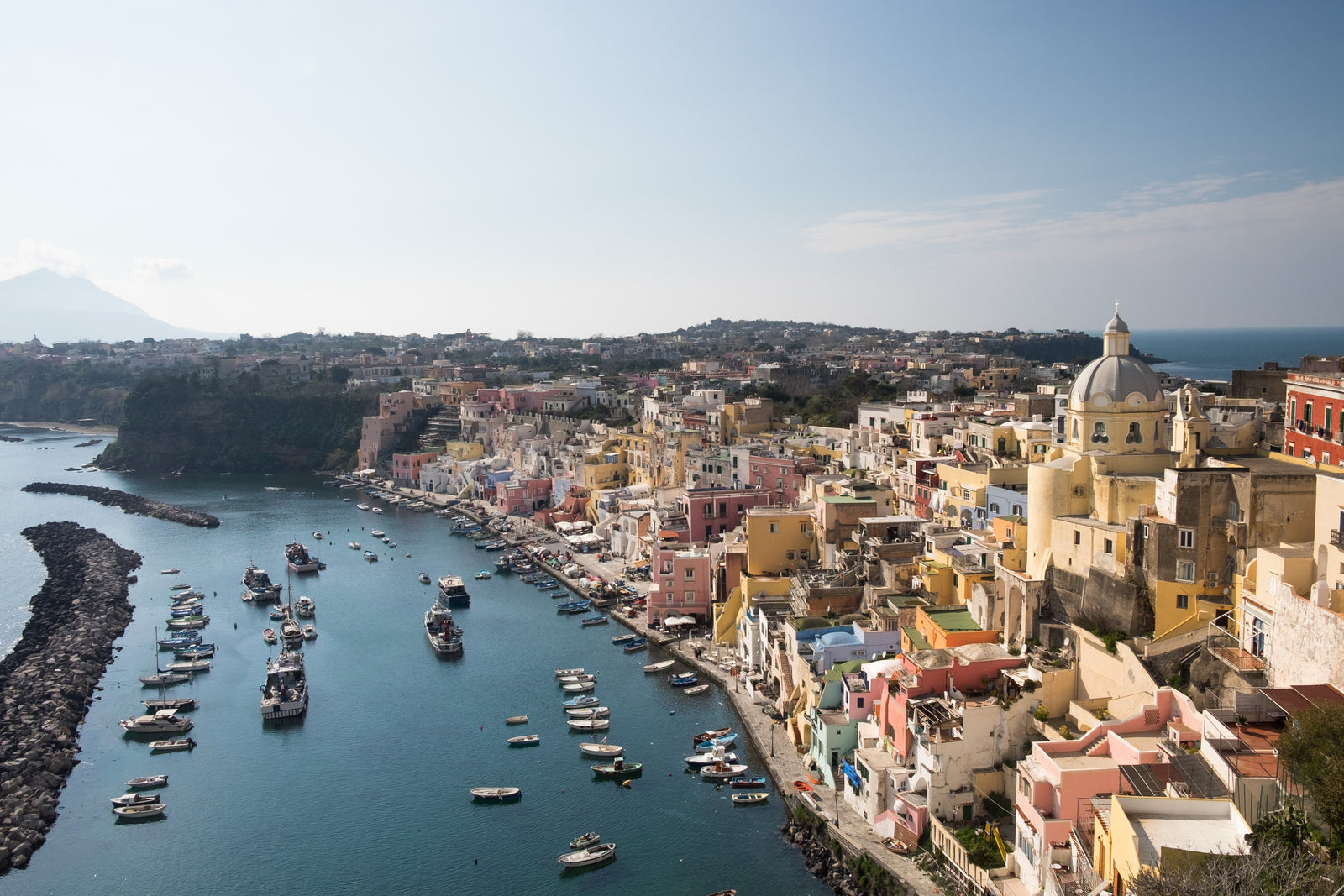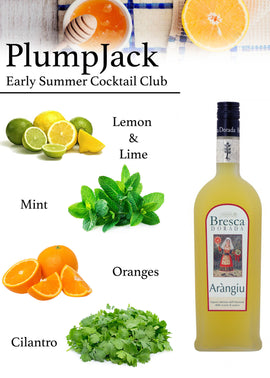Campania
It’s a sizzling summer in Italy this year. Everyone is planning to escape from the blazing heat and go toward the mountains or the beaches as soon as they are done with work. I already know where to go: to Campania!
From Napoli I will head to the Costiera, the Amalfi Coast, and travel from Sorrento to Positano, Amalfi, and Ravello until reaching Vietri and stopping at the small beach alcoves of Furore, Minori, Erchie, and Cetara. One can take a tour along the coast on one of those small boats that take you to grottoes and coves otherwise inaccessible by land and jump into the crystal clear refreshing water.
Then I will go south, past Salerno, in the Cilento. Here, between the Greek temples of Paestum and the roaming water buffalo, starts one of the most enchanted areas of southern Italy. The small villages of Acciaroli, Capaccio, Castellabate, Camerota, and Palinuro dot the coast like gems. This is where the dieta mediterranea, the Mediterranean Diet, was born; the perfect balance between the food and the environment. UNESCO has declared Cilento a World Heritage Site.
When the sea has satiated my appetite for lazy days lounging in the sun and having plenty of frittura mista di paranza (deep-fried fresh seafood plate) and mozzarella di bufala (buffalo mozzarella) I will aim east in the direction of the mountains.
The Sannio sub region includes the Campania mountain range. From the Matese Massif to Camposauro, mountains range down to the southern Apennines. Three provinces are included in this territory: Caserta, Benevento, and Avellino. This is a land of vast forests of chestnut, walnut, oak, beech, and maple trees and many types of fir typical of the alpine flora. At lower elevations we have vineyards, tobacco fields, and hazelnut orchards as the main agricultural production.
When the heat becomes unbearable reaching this area is the real relief, and we are not talking yet about the food and wine.
Now we are going to talk about that.
Elio Longobardi, Italian Wine Specialist
PlumpJack Wine & Spirits – Noe Valley
Marisa Cuomo, Ravello Bianco, Costa d’Amalfi DOC 2017
The vines struggle to find some room to grow in the vertical rocks that descend into the sea below. The grapes are then blessed for their stoic efforts by the sun and the salty breeze. This is Furore (the “Fury”) and the Neverland. Don’t look for a ring of houses standing round a square. You won’t find it. Furore is a village that isn’t a village, with its houses scattered on the slopes of the mountain dropping precipitously down to the sea, offers tiny samples of itself, allowing itself to be discovered with flirtatious bashfulness.
This is where Andrea Ferraioli and his wife, Marisa Cuomo, founded their estate in 1980, an estate of 10 hectares dedicated to the grapes of this area: Aglianico, Piedirosso, Biancolella, Falanghina, Fenile, Ripoli and Ginestra. With the help of top Campania oenologist Luigi Moio the estate’s winegrowers decided to pursue their vision of producing wines whose nose and taste reflect the locale with its gardens covered with pergolas of lemons, the unique cultivar called sfusato di Amalfi used for making the famous Limoncello. The bell towers of the old churches with their Arab-influenced domes and silent walking trails create a dreamy feeling that takes you away but at the same time makes you one with your surroundings.
If you can’t be physically there then a glass of Marisa and Andrea’s Ravello Bianco will do the trick.
Made of 60% Falanghina and 40% Biancolella, the grapes are hand picked, soft pressed, and undergo cold maceration. Fermented with selected yeasts they then spend 4 months in stainless steel tanks.
Gold with green reflections in the glass, the smell is an intricate note of garden herbs and briny green olives. The first sip brings to the palate a ripe citrusy accent supported by a salty underlining.
A wine for a warm summer evening to have with spaghetti and clams in white wine sauce or a fried seafood and veggies platter.
I Favati, Terzotratto, Taurasi DOCG 2009
The I Favati estate is located in Cesinali, province of Avellino, in the Irpinia area in the heart of the Sannio sub-region, 34 miles east of Napoli via A16. The Favati family started making wines at the beginning of the last century, but it wasn’t until 1996 that the winery was created. In 2000 the first wine, a Fiano di Avellino, was bottled. Today the brothers Piersabino and Giancarlo, along with Ginacarlo’s wife, Rossana, own 16 hectares planted with Fiano di Avellino and Greco di Tufo for the whites and Aglianico for the reds.
Taurasi is the most important cru for the Aglianico grape. The volcanic soils of the Taurasi region provide the potential that the Aglianico grape has to make wines that are on par with the Nebbiolo grape of Piedmont and the Sangiovese grape of Tuscany. Terzotratto Taurasi is made of 100% Aglianico grapes from the hilly Cretarossa vineyards on clay soil whose vines are an average of 15 years old. The harvest is done in the first 10 days in November. It is fermented in stainless steel tanks, aged for 12-15 months in small oak barrels and another 12-15 months in large barrels. The wine then rests an additional 6-8 months between stainless steel and bottle before release.
The wine is an intense ruby red color with a slight brick tone on the edge of the glass. The Nose reveals wet earth, moss, tar, and cherry preserve. The taste shows a rich tannic frame wrapped around elegant fruit and earthy spiciness. This is a wine that can age for another 10-15 years.
Food pairing suggestion: roasted meat, baked pasta, and aged cheeses.
Fusilli giganti con noci, salsiccia e pomodorini
(Large fusilli pasta with walnuts, sausages and cherry tomatoes)
This recipe from Avellino province works all year around. The walnuts impart a nutty earthy flavor that compliments both wines but I prefer it better with I Favati Terzotratto Taurasi.
Ingredients (serves 4)
· 8 oz. Fusilli
· 8 walnuts, no shell, chopped
· 2 Italian pork sausages, cut in rough pieces and with the case removed
· 5-6 cherry tomatoes, each one cut in four pieces
· 2 tbsp. extra virgin olive oil
· 1 small yellow onion, thinly sliced
· 1 tsp. crushed chili pepper
· ½ cup dry red wine
· Salt & pepper
· ½ cup grated Auricchio* cheese
- In a medium size sauté pan heat olive oil then add the onion and the chili pepper
- Sauté the onion until golden with the chili pepper on medium-low heat flame
- Add the chopped walnut, cover the pan, lower the heat and cook for about 5 minutes to help the walnuts to release their own oil
- Uncover the pan, add the sausages and raise the flame to medium heat to cook until the meat is seared evenly
- Add the wine and let it reduce then lower the flame again
- Meantime in a large pot bring the water to boil, add 1 Tbsp. of coarse salt and drop in the pasta
- 5 minutes before the pasta is ready add the cherry tomatoes to the sauce and cook on medium-low heat until the pasta is ready
- Serve with a sprinkle of Auricchio cheese
* Gennaro Auricchio created Auricchio cheese in 1877 in Napoli. It could be made with sheep or cow milk. When ages the taste is similar to provolone cheese.





